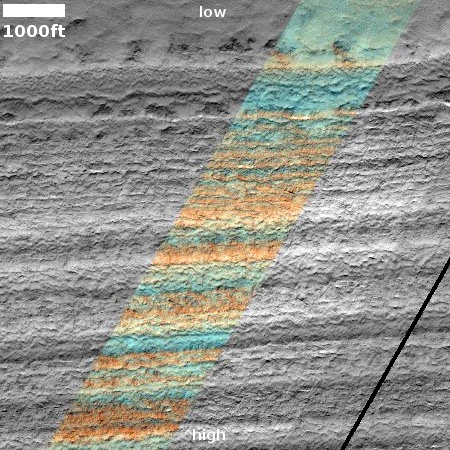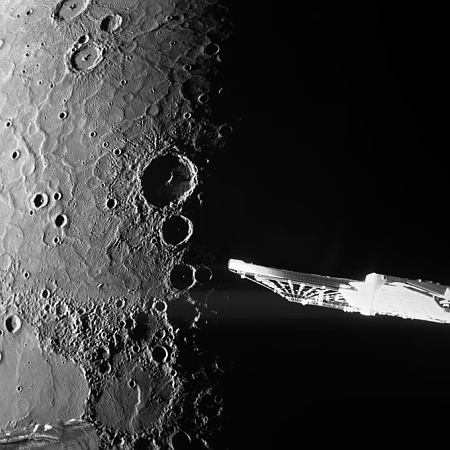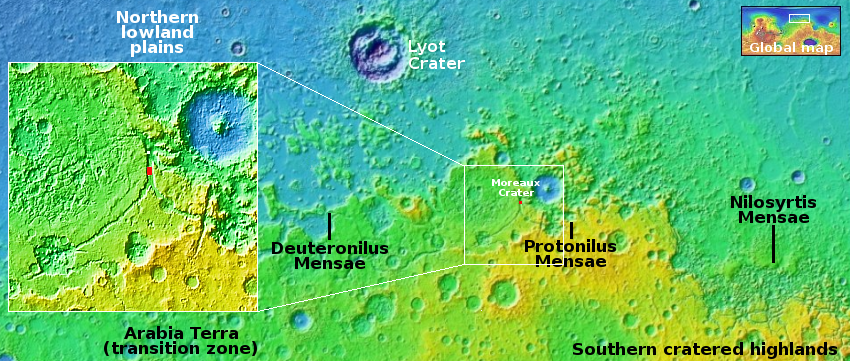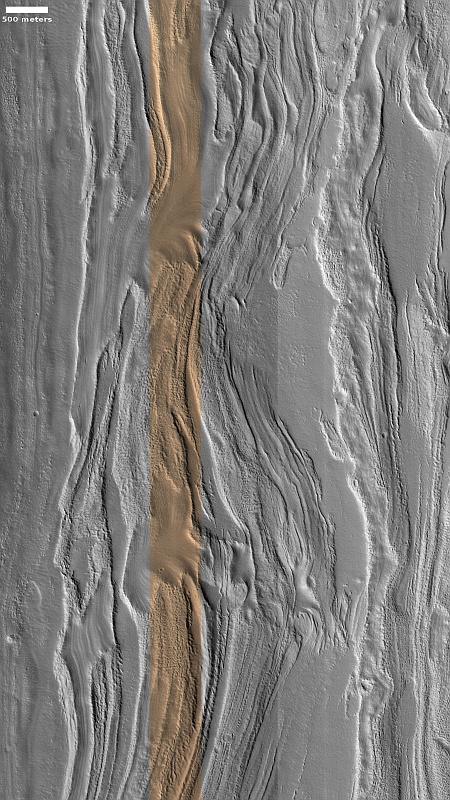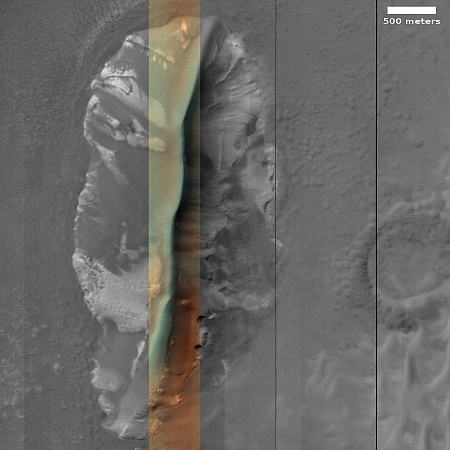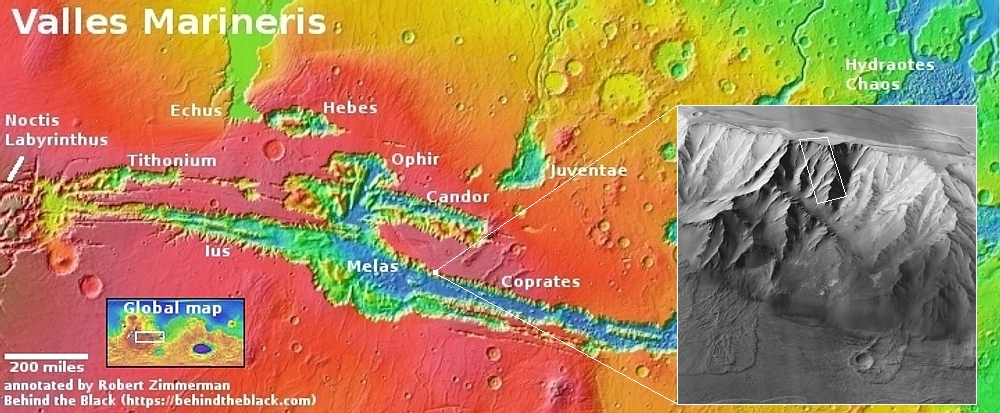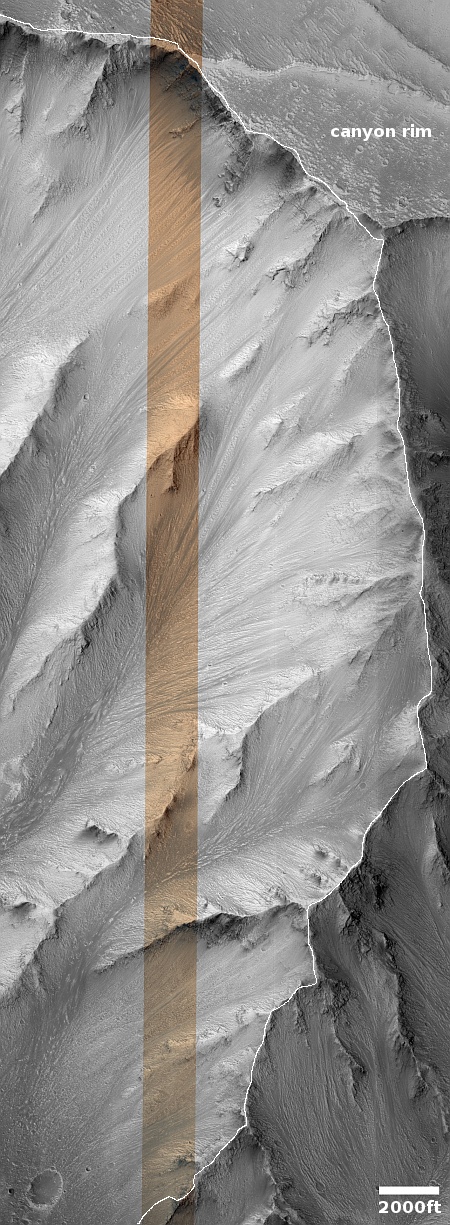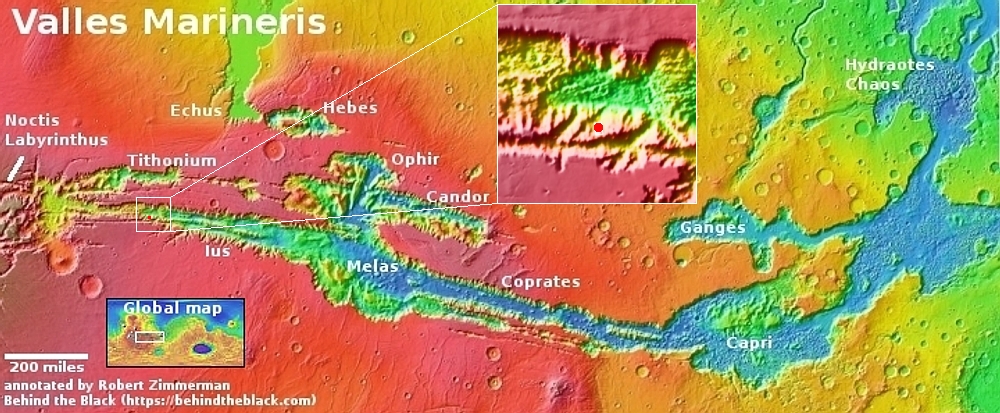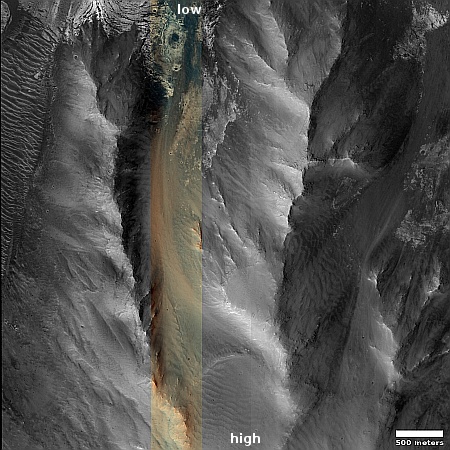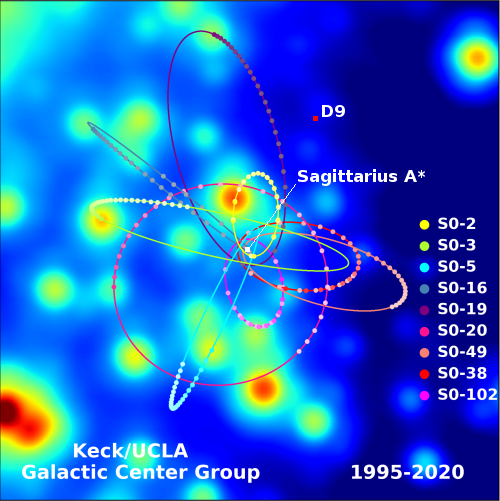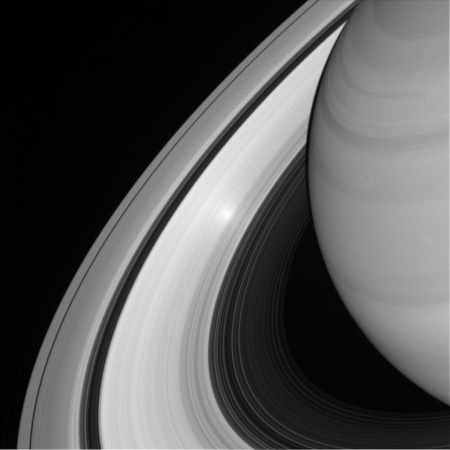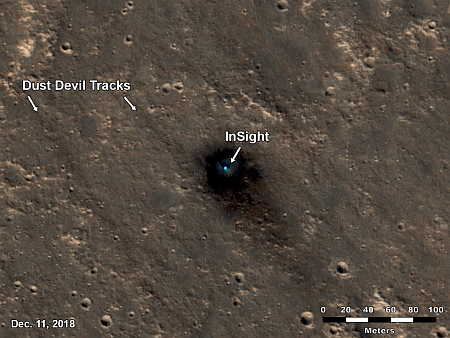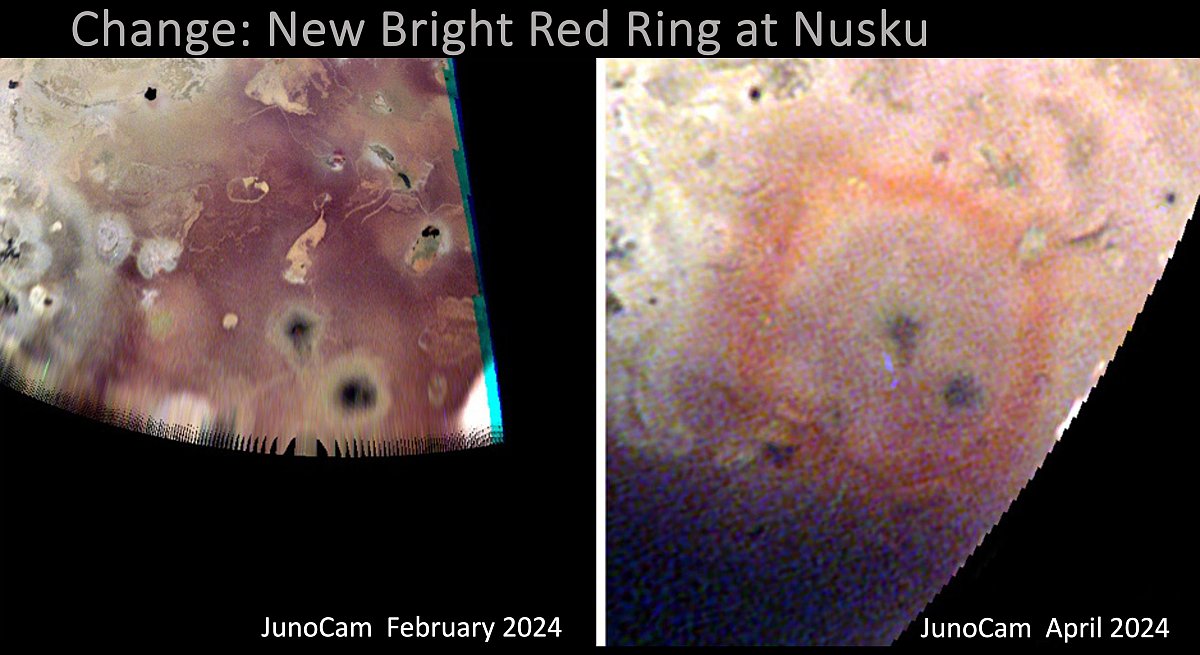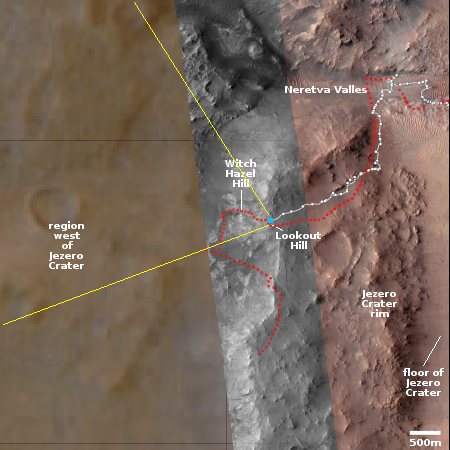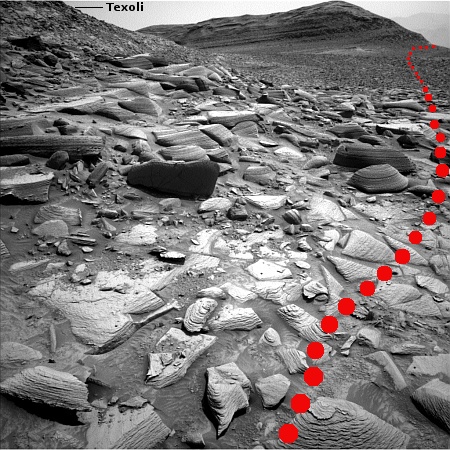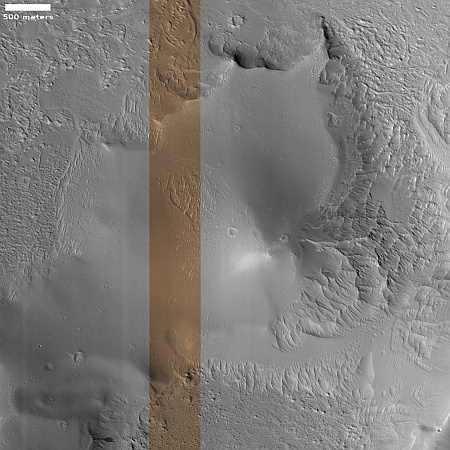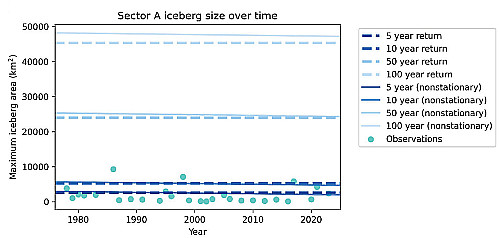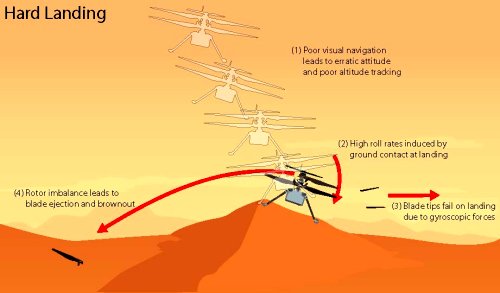The mysteries buried in the Martian south pole ice cap
Cool image time! The picture to the right, cropped and color-enhanced to post here, was taken on November 3, 2024 by the high resolution camera on Mars Reconnaissance Orbiter (MRO).
The picture is labeled as a “terrain sample,” which means it was likely taken not as part of any specific research project, but to fill a gap in the camera schedule in order to maintain the camera’s proper temperature. In this case the camera team tries to choose interesting features, though sometimes they can’t due to timing.
In this case they were able to target a nice piece of geology, a layered 2,000 foot cliff on the outer edge of the south pole ice cap. The color strip illustrates the possibilities within those layers. I have significantly enhanced the colors to bring out the differences. The orange suggests dust, the aqua-blue water ice, though these colors could also indicate interesting mineralogies.
» Read more
Cool image time! The picture to the right, cropped and color-enhanced to post here, was taken on November 3, 2024 by the high resolution camera on Mars Reconnaissance Orbiter (MRO).
The picture is labeled as a “terrain sample,” which means it was likely taken not as part of any specific research project, but to fill a gap in the camera schedule in order to maintain the camera’s proper temperature. In this case the camera team tries to choose interesting features, though sometimes they can’t due to timing.
In this case they were able to target a nice piece of geology, a layered 2,000 foot cliff on the outer edge of the south pole ice cap. The color strip illustrates the possibilities within those layers. I have significantly enhanced the colors to bring out the differences. The orange suggests dust, the aqua-blue water ice, though these colors could also indicate interesting mineralogies.
» Read more

